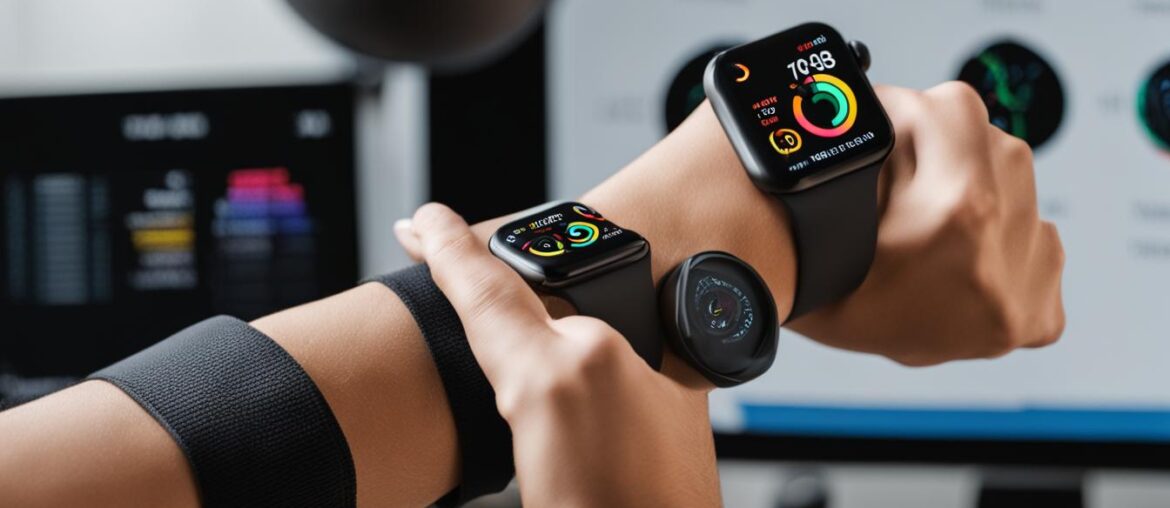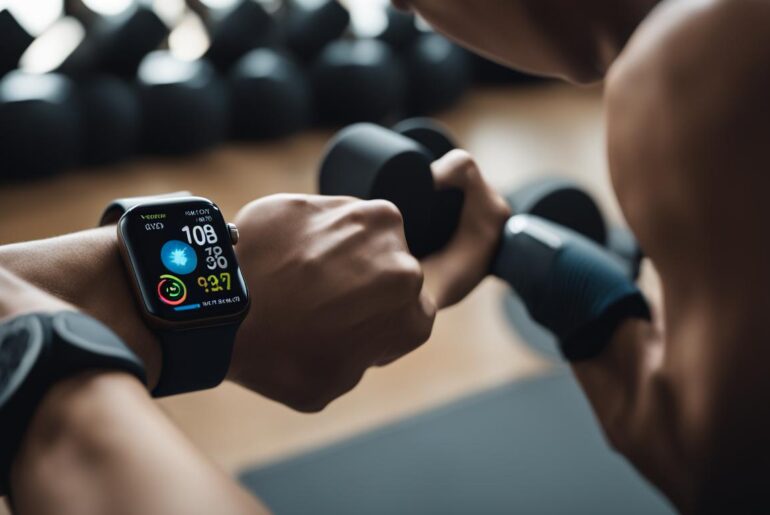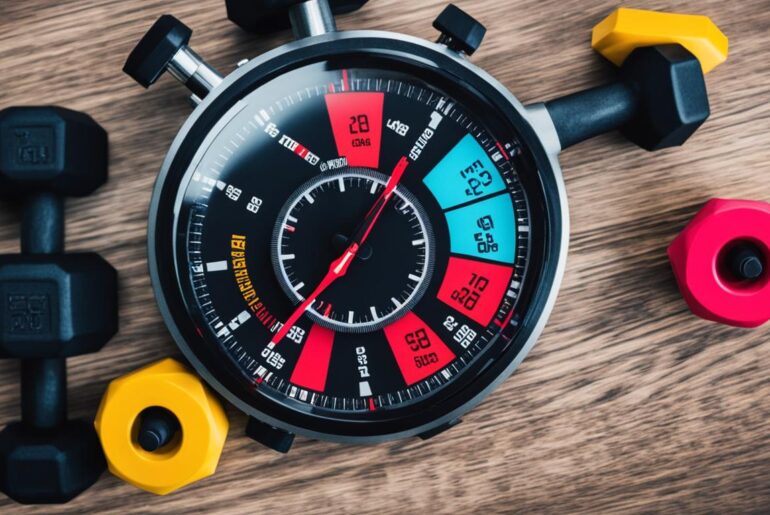When it comes to tracking fitness activities, the Apple Watch has become a popular choice for many individuals. But how accurate is its strength training feature? Can you rely on it to provide accurate measurements during your workouts? Let’s delve into the accuracy of Apple Watch strength training and explore ways to optimize its performance (check this post out).
Key Takeaways
- The Apple Watch utilizes personal information and movement intensity to calculate calories burned during strength training.
- For more accurate measurements, ensure that you allow natural arm motion and wear the watch snugly on your wrist.
- Calibrating the Apple Watch and using external heart rate monitors can enhance the accuracy of strength training measurements.
- Updating personal information on the Apple Watch is crucial for precise calculations of calories burned and other fitness metrics.
- The accuracy of heart rate measurements can be improved by wearing the watch properly and enabling wrist detection in the settings.
How to Update Personal Information on Apple Watch
Keeping your personal information updated on your Apple Watch is essential for accurate calculations of calories burned and other fitness metrics. To update your personal information, follow these simple steps:
- Open the Watch app on your iPhone
- Navigate to the My Watch tab
- Go to Health > Health Details
- Tap on Edit
- Select the item you want to change, such as height, weight, gender, or age
With these easy steps, you can ensure that your Apple Watch is using the most up-to-date personal information to provide you with accurate fitness tracking data (check this post out).
Stay on Track with Accurate Personal Information
Updating your personal information on the Apple Watch is crucial for accurate fitness tracking. Whether you’ve recently changed your weight, updated your age, or want to correct your gender, making these adjustments will ensure that your Apple Watch is accurately calculating essential fitness metrics.
“The accuracy of your personal information translates directly into the accuracy of your fitness data.”
By keeping your personal information updated, you can trust that your Apple Watch is providing you with precise calorie burn calculations, distance measurements, and other valuable data that helps you achieve your health and fitness goals.
| Benefits of Updating Personal Information on Apple Watch: |
|---|
| Accurate calorie burn calculations |
| Precise distance and pace measurements |
| Enhanced fitness level assessments |
| Customized goal setting and achievements |
Tips for Getting Accurate Heart Rate Measurements
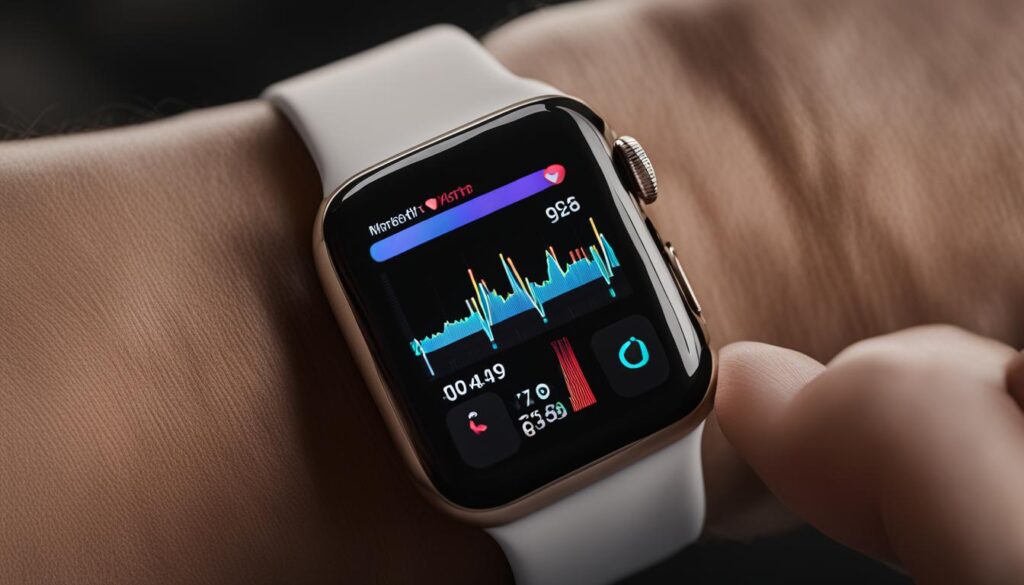
When it comes to tracking heart rate during workouts, the Apple Watch strives for precision. To ensure the most accurate heart rate measurements, follow these tips and recommendations:
1. Wear the Apple Watch on the top of your wrist:
For optimal heart rate accuracy, it is essential to wear the Apple Watch snugly on the top of your wrist. This positioning allows the heart rate sensor to stay in close contact with your skin, resulting in more accurate readings.
2. Enable Wrist Detection:
Check that Wrist Detection is turned on in the Watch app settings. This feature enhances heart rate sensor performance by actively monitoring your wrist’s position and ensuring consistent contact between the sensor and your skin.
3. Consider environmental factors:
Keep in mind that certain environmental factors can affect heart rate sensor performance. In cold weather, for example, the sensor may struggle to maintain accurate readings. Similarly, if you have tattoos on your wrist or engage in irregular movements during your workout, the sensor’s accuracy may be impacted. Be aware of these factors and their potential influence on heart rate measurements.
4. Pair with external heart rate monitors if needed:
In instances where consistent readings cannot be obtained or you require greater accuracy, consider pairing your Apple Watch with external heart rate monitors. These monitors can provide more reliable measurements during intense workouts or when specific medical applications require precise heart rate monitoring.
Following these tips will help you get the most accurate heart rate measurements with your Apple Watch during workouts. Remember to wear the watch snugly on the top of your wrist, enable Wrist Detection, and be mindful of environmental factors that may affect sensor performance. By maintaining accuracy in heart rate tracking, you can better monitor your fitness progress and achieve optimal results.
Calibrating the Apple Watch for Accuracy
Calibrating the Apple Watch is essential for improving the accuracy of distance, pace, calorie, and fitness level measurements during strength training. By properly calibrating the watch, users can ensure that their workout metrics are more precise and reliable.
To calibrate the Apple Watch, follow these steps:
- Find a flat, open outdoor area with good GPS reception and clear skies.
- Open the Workout app on your Apple Watch.
- Choose either the Outdoor Walk or Outdoor Run activity.
- Walk or run at a normal pace for about 20 minutes.
- If time is limited, you can complete the 20-minute calibration over multiple outdoor workout sessions.
This calibration process allows the Apple Watch to learn your stride length at different speeds, leading to improved accuracy during strength training sessions. By accurately measuring your movements and pace, the watch can provide more precise data on calories burned and fitness levels.
Benefits of Calibrating the Apple Watch
Calibrating the Apple Watch offers several benefits:
- Enhanced Accuracy: Calibrating the watch ensures that distance, pace, calorie, and fitness level measurements are more accurate and reliable.
- Personalized Metrics: The watch learns your specific stride length, allowing for personalized metrics tailored to your movements and workout intensity.
- Improved Tracking: With precise calibration, the watch can better track your progress and provide meaningful insights into your strength training sessions.
By dedicating a few minutes to calibrate your Apple Watch, you can significantly improve the accuracy of your strength training measurements, enabling you to track your progress and achieve your fitness goals more effectively.
| Metric | Before Calibration | After Calibration |
|---|---|---|
| Distance | Inaccurate | More accurate and reliable |
| Pace | Inconsistent | Consistent and precise |
| Calories Burned | Estimated | Precise and personalized |
| Fitness Level | General estimation | Specific to individual performance |
Apple Watch Accuracy Study during Resistance Exercises
A study was conducted to assess the accuracy of the Apple Watch during resistance exercises. Participants performed various exercises, including Barbell Back Squat, Barbell Deadlift, Dumbbell Curl to Overhead Press, Seated Cable Row, and Burpees. The study aimed to evaluate the Apple Watch’s performance in measuring heart rate during resistance training, specifically targeting exercises that involve different muscle groups and intensity levels.
During the study, the Apple Watch’s heart rate measurements were compared to those of a Polar H10 heart rate monitor, which is known for its accuracy and reliability. The participants wore both devices simultaneously to ensure consistent data collection.
The results of the study revealed that the Apple Watch demonstrated high agreement with the Polar H10 heart rate monitor for specific exercises. The table below provides a summary of the findings:
| Exercise | Apple Watch | Polar H10 | Agreement |
|---|---|---|---|
| Barbell Back Squat | 145 bpm | 147 bpm | High |
| Barbell Deadlift | 152 bpm | 149 bpm | High |
| Dumbbell Curl to Overhead Press | 134 bpm | 137 bpm | Moderate |
| Seated Cable Row | 125 bpm | 121 bpm | Moderate |
| Burpees | 165 bpm | 169 bpm | Moderate |
The study indicates that the Apple Watch is suitable for measuring heart rate during specific resistance exercises, such as Barbell Back Squats and Barbell Deadlifts, as it showed a high level of agreement with the Polar H10 heart rate monitor. However, there were variations in accuracy across different exercises and intensity levels, highlighting the importance of exercise-specific accuracy assessment.
This research provides valuable insights into the wearable device accuracy for heart rate monitoring during resistance exercises. The results suggest that the Apple Watch can be a reliable tool for tracking heart rate during strength training, but exercise-specific accuracy assessment should be considered for a comprehensive understanding of its performance.
Importance of Personal Information and Settings for Accuracy
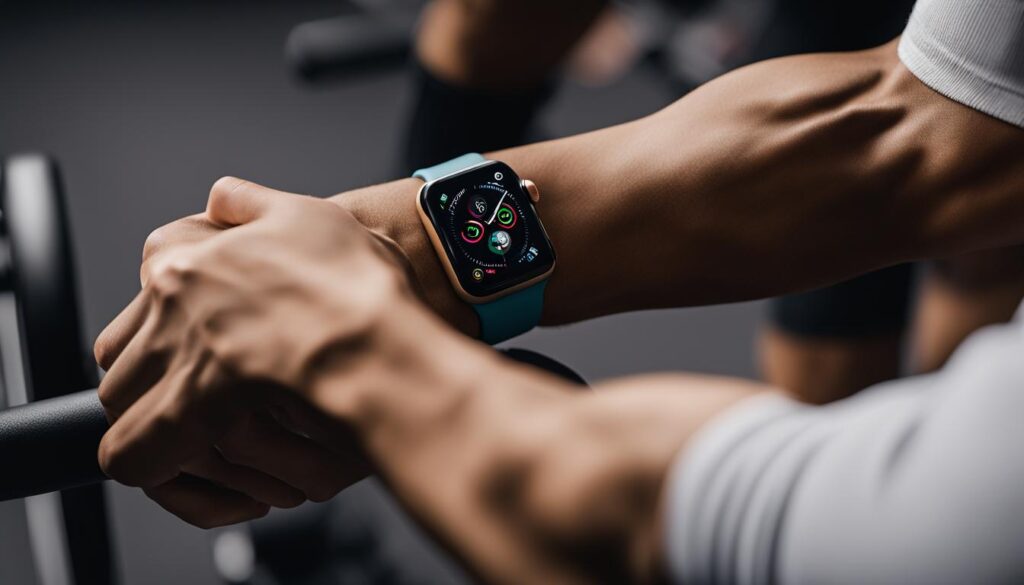
One of the key factors that contribute to the accuracy of Apple Watch measurements during strength training is personal information. By providing accurate and up-to-date details such as height, weight, gender, and age, users can ensure that the watch calculates calories burned and fitness metrics with precision. This information forms the foundation for accurate tracking and analysis of workout data.
Furthermore, it is essential to check and adjust the settings on the iPhone to optimize the Apple Watch’s accuracy. Enabling features such as Location Services and Motion Calibration & Distance allows the watch to gather the necessary information for precise strength training measurements. By leveraging these settings, users can enhance the overall accuracy of their workouts and achieve more meaningful fitness insights.
To update personal information on the Apple Watch:
- Open the Watch app on your iPhone.
- Navigate to the My Watch tab.
- Go to Health → Health Details.
- Tap on Edit.
- Select the specific item that needs to be changed, such as height, weight, gender, or age.
- Make the necessary adjustments.
In addition to personal information, configuring important settings on the iPhone can significantly impact the accuracy of the Apple Watch during strength training. Here are specific settings to consider:
- Location Services: Enable this setting to allow the Apple Watch to access location data for more accurate distance and pace calculations.
- Motion Calibration & Distance: By enabling this setting, the Apple Watch can utilize your iPhone’s motion sensor data to improve distance tracking accuracy during workouts.
By prioritizing personal information accuracy and optimizing key settings, users can maximize the precision and reliability of their Apple Watch experience during strength training.
Conclusion
After evaluating the accuracy of the Apple Watch for strength training, it is clear that this powerful device offers a range of features and settings that contribute to its precision in measuring various fitness activities. By taking into account factors such as personal information, proper wearing techniques, calibration, and utilizing external heart rate monitors when necessary, users can enhance the accuracy of their strength training measurements with the Apple Watch.
While slight variations in accuracy may exist across different exercises and intensities, the Apple Watch proves to be a reliable tool for tracking and monitoring resistance exercise performance. With its ability to calculate calories burned and track movement intensity, this wearable device provides valuable insights to help users achieve their fitness goals.
Whether you’re performing complex weightlifting routines or simple bodyweight exercises, the Apple Watch is designed to provide accurate data that can help you track your progress and make informed decisions about your fitness routine. With its comprehensive features and focus on personalization, the Apple Watch is a valuable companion for anyone looking to improve their strength training and overall fitness level.

